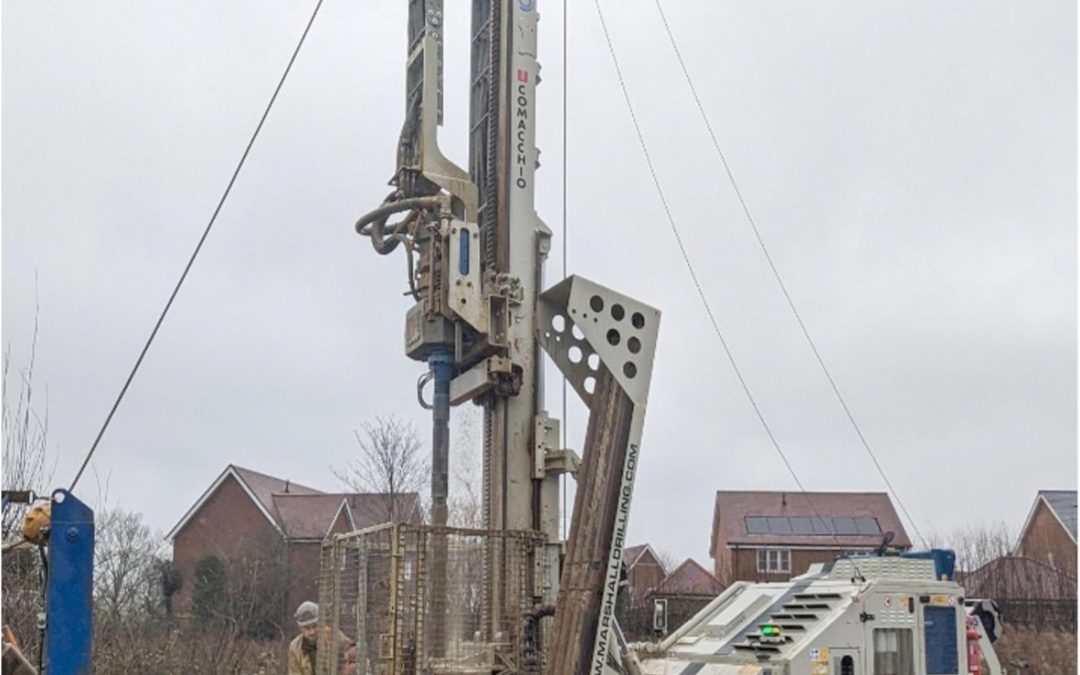Drainage design calls for a robust approach
9th April 2024
Geotechnical • Specialist Services
The underlying geology of a greenfield site in East Sussex, destined to be a residential housing development, challenges Ground & Water. A big rig is required to drill some serious borehole soakaways. The result was acceptable infiltration rate data, a finalised drainage design and a happy client.
Our Client
Our client was a well-known house builder.

Preliminary-Assessment
The site comprised an undeveloped field and the proposed development involved construction of a residential housing development. The site was located on bedrock geology comprising the Upper Tunbridge Wells Sand. Given the characteristics of this geology we knew we might encounter Mudstone so specifying the appropriate drilling rig was paramount.
Our Challenge
Ground & Water was commissioned to conduct drilling and installation of six deep borehole soakaways and carry out falling head and constant head tests to aid the design of a sustainable drainage system (SuDS) for the site. Thanks to the underlying geology we had to go really deep.
The Ground & Water Approach
Bearing in mind the geology and the depth of boreholes required, a rotary drilling rig was used. The site works comprised the drilling of six rotary drilled boreholes initially to a proposed depth of 10m bgl followed by the conduct of a falling head test. If it was found that the falling head test performed well, the borehole was stopped at 10m and installed. However, on each occasion it was found that the infiltration rate was not preferrable due to encountering Mudstone, presumably because of the Wadhurst Clay Formation to the south encroaching onto the site. The boreholes were continued to 15m followed by an additional falling head test. In some cases, this proved suitable and so the borehole was installed at 15m followed by the conduct of a constant head test to determine the final flow rate.
However, based on results and encountered geology it was decided that some boreholes would be advanced to 20m with the aim to improve the flow rate. A constant head test was then conducted within each borehole following installation to calculate the final flow rate.
The Outcome
The outcome of the works was the installation of six deep borehole soakaways with infiltration rate data for each. This could then provide a cumulative value spread across the boreholes across site and enable the finalisation of the drainage design for the residential development.
